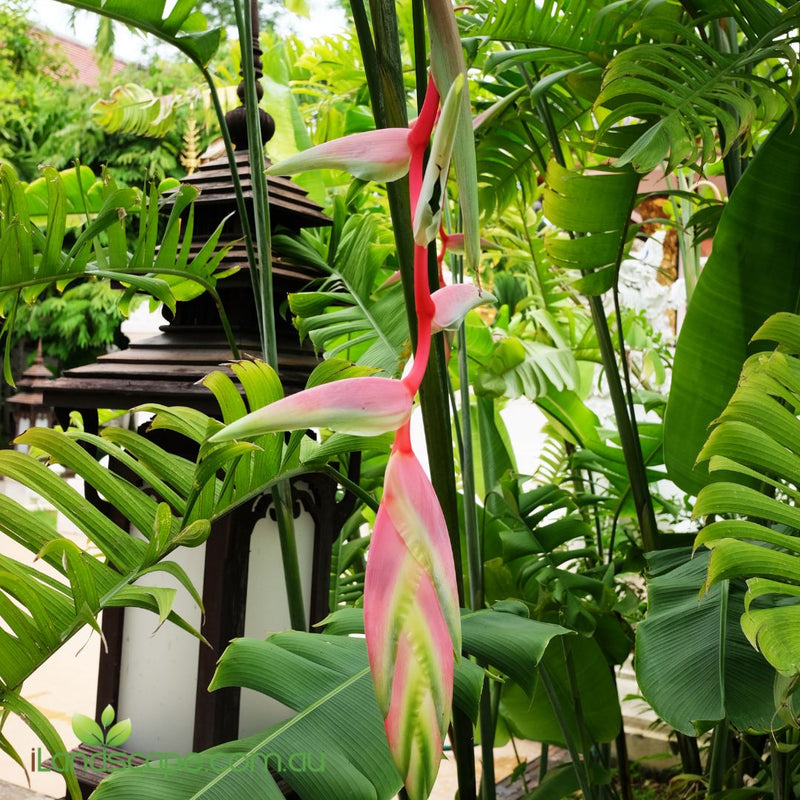Ravenea rivularis - Majestic Plam
Description:
Ravenea rivularis, commonly known as the Majesty Palm or Majestic Palm, is a large, elegant palm that is popular for its graceful appearance and adaptability to both indoor and outdoor environments. Native to the riverbanks of Madagascar, this palm is valued for its tall, straight trunk and lush, feathery fronds, making it a striking feature in both tropical gardens and interior spaces.
Flowers:
The flowers of Ravenea rivularis are small, pale yellow, and appear on branching inflorescences that emerge from the base of the fronds. These flowers are not particularly showy and are often hidden within the dense foliage. In outdoor settings, the flowers may develop into small, round fruits, though they are generally not a primary ornamental feature.
Foliage:
The foliage of the Majesty Palm is one of its most attractive features. The fronds are long, arching, and pinnate, with numerous narrow, dark green leaflets. Each frond can reach up to 2.5 meters in length, creating a lush, tropical canopy that adds elegance to any setting. The dense arrangement of the fronds gives the palm a full, vibrant appearance.
Fruit:
If grown in ideal conditions outdoors, Ravenea rivularis may produce small, round, reddish-orange fruits. These fruits are typically not considered significant for ornamental purposes and may be removed to maintain the plant’s aesthetic appeal.
Form and Size:
Ravenea rivularis is a tall, solitary palm that can grow to a height of 9 to 15 meters in its natural habitat, though it often remains smaller when grown in pots or under indoor conditions. The palm has a single, straight trunk that is smooth and greyish-brown, topped with a crown of arching fronds. The trunk gradually thickens at the base as the palm matures, giving it a stately appearance.
Growing Conditions:
Majesty Palm thrives in warm, humid climates and prefers bright, indirect light when grown indoors or partial shade in outdoor settings. It requires well-draining, fertile soil and regular watering to maintain its lush foliage. This palm is moderately drought-tolerant once established but should not be allowed to dry out completely. It is sensitive to cold and should be protected from frost, making it more suitable for tropical and subtropical climates or as an indoor plant in cooler regions.
Uses:
Ravenea rivularis is versatile and can be used in a variety of settings. Outdoors, it serves as an excellent specimen plant, providing a tropical focal point in gardens, along pathways, or near water features. Indoors, it is a popular choice for adding a touch of greenery to living rooms, offices, and conservatories. Its tall, upright growth makes it ideal for spaces with high ceilings or large windows.
Maintenance:
Majesty Palm requires consistent care to maintain its health and appearance. Regular watering is essential, especially during dry periods, and the palm benefits from periodic feeding with a balanced, slow-release fertilizer. Indoor plants may require misting or a humidity tray to maintain adequate moisture levels. Prune any yellow or brown fronds to keep the palm looking its best, and monitor for pests such as spider mites or scale.
Notes:
Ravenea rivularis is known for its relatively fast growth compared to other palms, especially when provided with ample water and nutrients. However, it can be somewhat challenging to maintain indoors due to its need for consistent humidity and light. Proper care will ensure that the Majesty Palm remains a stunning addition to any space.
Companion Plants:
Pair Ravenea rivularis with other tropical plants such as bird of paradise, philodendrons, or anthuriums to create a lush, tropical garden or interior display. It also works well with ferns and other shade-loving plants in outdoor settings.
Common Name: Majesty PalmBotanical Name: Ravenea rivularisFamily: ArecaceaeOrigin: Madagascar
